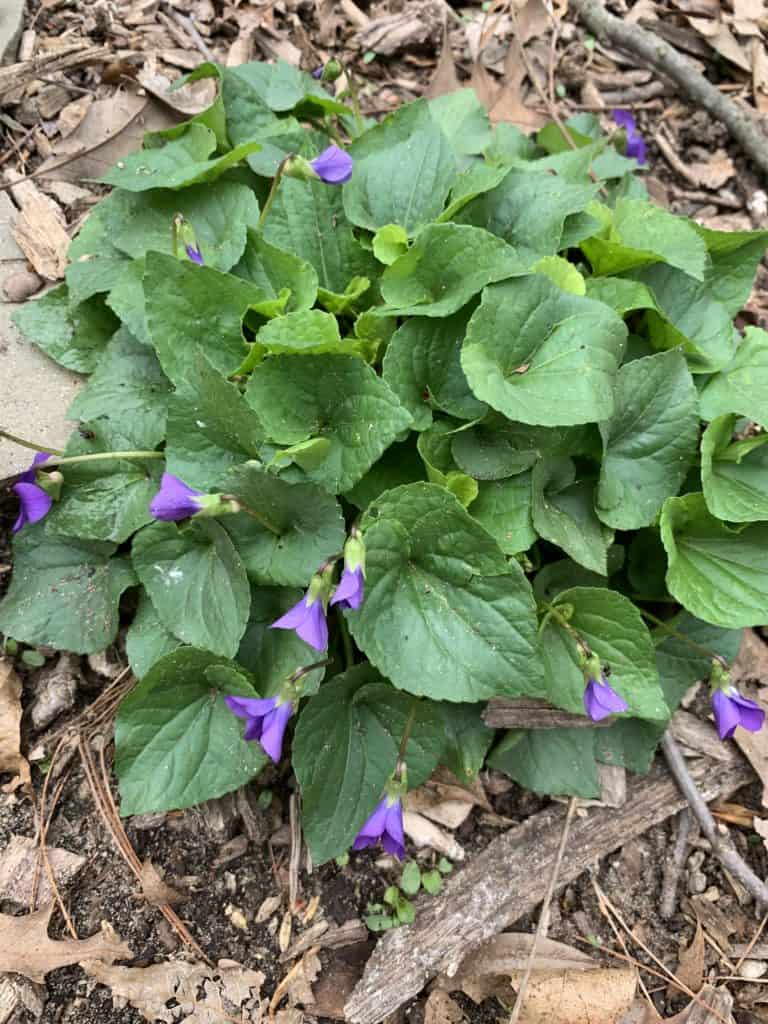Violets: A Source of Spring Beauty, Health and Sweetness

Springtime has surely arrived when you see violets blooming everywhere. We have many native violet species. Purple, yellow, and white violets can be found growing wild and can be foraged for both the edible flowers and leaves.
Viola odorata, admired for over 2,000 years, is the best-known violet. The ancient Athenians held the plant in high regard for its power both to moderate anger and to cure insomnia. In 16th century England, the flowers were used to made a syrup for a mild laxative used in children.
The flowers and leaves have often been used as an infusion or syrup for treating coughs, chest colds, and congestion. Sweet violets have also been used as coloring agents and its delicate fragrance in perfumes.
Violets prefer moist soil and dappled light. Many species of common wild purple violets have edible flowers but are not fragrant. There is a native sweet white violet, Viola blanda, that looks like it belongs in a fairy garden. It has a similar sweet scent to Viola odorata and grows in moist, rich woods.
Various violet species contain generous amounts of a compound called rutin which helps maintain the strength and integrity of capillary walls. Some medical texts say that taking 20 to 100 mg of rutin daily can significantly strengthen the capillaries. The ethnobotanist Dr. James Duke estimated a few tablespoons of violet flowers would contain about 100 mg of rutin.
Purple violet blossoms are beautiful when added to a spring spinach salad and they also provide a good source of vitamin C. They also can be crystalized or candied. To do this at home, beat an egg white until frothy. Dip the flowers in and then sprinkle sugar over the entire flower. Let them dry overnight on waxed paper, and use them to decorate cakes or other desserts.
You can recognize violets by their heart-shaped leaves which grow in a rosette pattern and emerge from the ground at a central point. Their roots are knobby, branching horizontal rhizomes. After spring blooming and later in the summer, the plants produce self-pollinating petal-less flowers that eventually become capsules to eject seeds.
